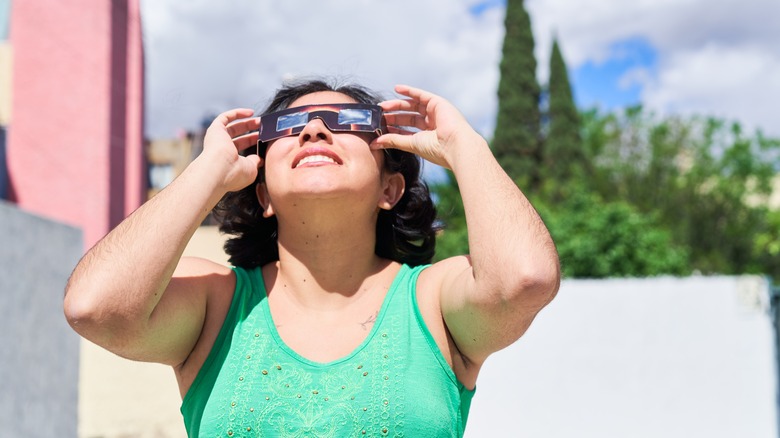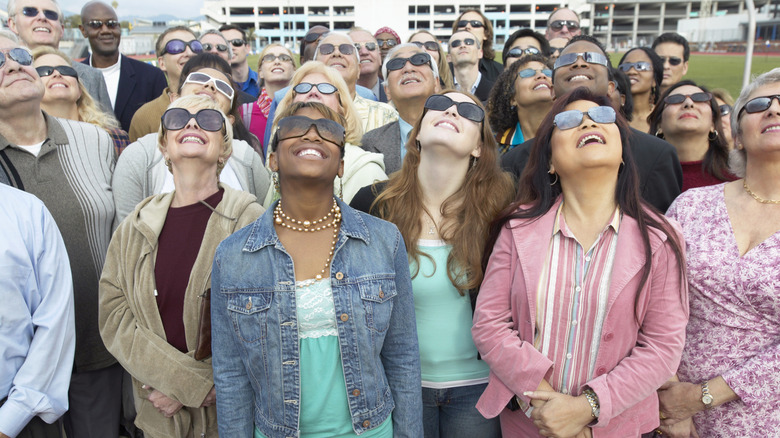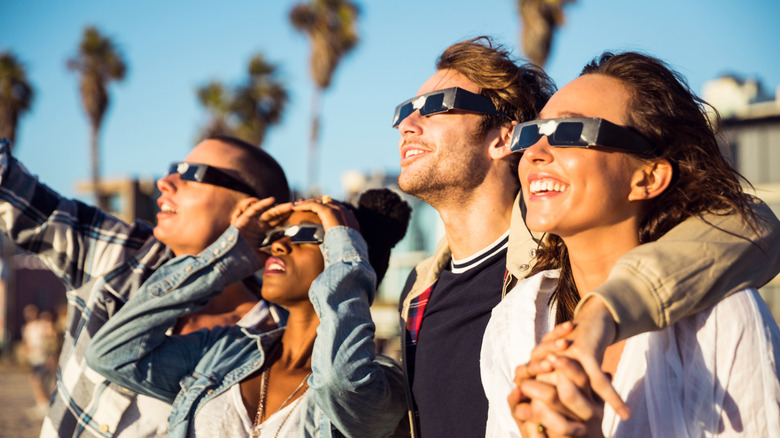
Fabian Montano Hernandez/Shutterstock
We may receive a commission on purchases made from links.
If you are among the 4 million or so people with a view of the 2024 total solar eclipse on April 8, we’re sure you are on the last leg of preparing for the event. You may be among the most diligent planners and know the tiniest details to take care of for a trouble-free eclipse-viewing experience, but there might be one little thing you missed: your outfit for the day.
Eclipse Day is special, and there’s no denying that. But what if we told you that what you wear that day might profoundly affect your entire eclipse-watching experience, not just for you but everyone around you? If you are rummaging through your wardrobe, stop right there! There are only two colors you should be concerned with.
Wearing bright red or green apparel on Eclipse Day might be the best decision you make that day. It will enhance your viewing experience and allow you to witness a rare event that only happens naturally during solar eclipses. Known as the Purkinje Effect, this little-known phenomenon is rarely experienced by humans in natural conditions.
What is the Purkinje Effect?

Digital Vision./Getty Images
Have you ever noticed how brightly colored objects become less colorful — almost turning black and white — when inside a dimly lit room or when it’s dark? While humans have long been aware of this phenomenon, the cause was only investigated in the 1800s after Czech anatomist Jan Evangelista Purkyně decided to dig deeper. He eventually deduced that this difference in perception of color occurs because the human eye switches between two different systems depending on the amount of ambient light.
Purkyně’s theory would eventually be proved right after the discovery of two types of photoreceptor cells called rods and cones that the human eye uses. We now know that cone cells are primarily active during the day. The rod cells, on the other hand, become active at night and have evolved to improve our vision in the dark.
Our brains have adapted to switch between these two systems at dusk (and dawn). Interesting things happen during this transitional phase, however. Since both rod and cone cells become active simultaneously during this phase, it results in a hybrid-style color perception. This effect is barely noticed in typical sunset and sunrise events because of the gradual manner in which the transition takes place.
However, during solar eclipses, this transition happens faster than our brains can comprehend, leading to what we today know as the Purkinje Effect.
Why wear red or green apparel during an eclipse?

Leopatrizi/Getty Images
Now that you know what the Purkinje Effect really is, you might still wonder about its connection with red and green clothes.
During the eclipse phase, when the transition from a brightly lit environment to darkness happens within a few minutes, red objects near you will appear darker. Greens and blues, on the other hand, will do the opposite and will appear brighter. There may also be instances where some people perceive objects in violet and lilac colors as brighter than they usually do under normal lighting conditions.
To maximize the perception of the Purkinje Effect, you and the people around you must be surrounded by either green or red visuals during the eclipse. The easiest way to achieve this is to ensure that people around you are wearing clothes in either of these shades.
Sensing heightened demand for Purkinje Effect apparel, Amazon has several such T-shirts on sale. If you somehow convince everyone around you to show up to your eclipse party wearing either red or green clothes, you and the rest of the gang could witness an incredible spectacle that won’t be possible in the Continental United States for the next 20 years!